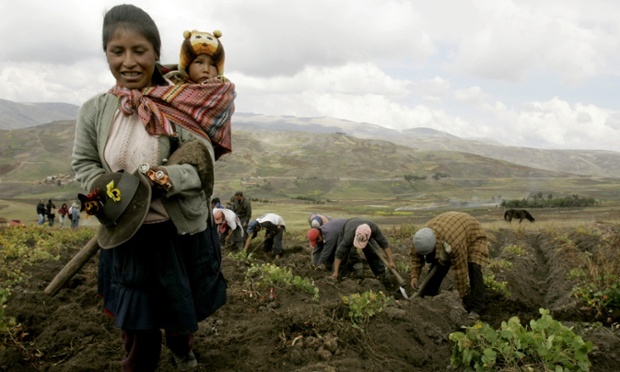
Smallholder Farmers Are the New Global Food Frontier
A third of the world’s 7.3 billion people are smallholder farmers and their families who produce nearly 70% of all food consumed worldwide on 60% of the planet’s arable land. For what sounds like a major part of the global economy, you would expect these farmers to be relatively well off and financially secure. But they aren’t. In fact, they represent the majority of the poorest and hungriest people on earth. How did this happen?
May 12, 2015 | Source: The Guardian | by Hugh Locke
A third of the world’s 7.3 billion people are smallholder farmers and their families who produce nearly 70% of all food consumed worldwide on 60% of the planet’s arable land. For what sounds like a major part of the global economy, you would expect these farmers to be relatively well off and financially secure. But they aren’t. In fact, they represent the majority of the poorest and hungriest people on earth. How did this happen?
It began with a global food scare in the early 1960s. Experts predicted the world population would exceed the food supply by the 1990s, based on production levels at the time. The answer was a massive increase in industrial farming to produce huge quantities of cheap grain using hybrid seeds and chemicals. It worked, and there is no question that a major crisis was averted.
About the same time as the initial food scare, rich countries began giving foreign aid to developing countries to improve their economies and reduce poverty. Part of the deal was that recipient nations had to agree to reduce support for domestic smallholder agriculture and encourage their citizens to buy cheap imported grain from industrialized farms in the countries giving the foreign aid.
The combination of a vast increase in industrial farming and greatly reduced support for agriculture in developing countries led to smallholder farmers becoming invisible. Today, there are 2.5 billion people who live and work on 500m smallholder farms, each less than two hectares (five acres). They represent one-third of humanity, yet they have been systematically ignored and marginalized for 60 years, while industrial farming has received the benefits of agricultural research, subsidies, trade agreements, tax credits and regulatory systems.
